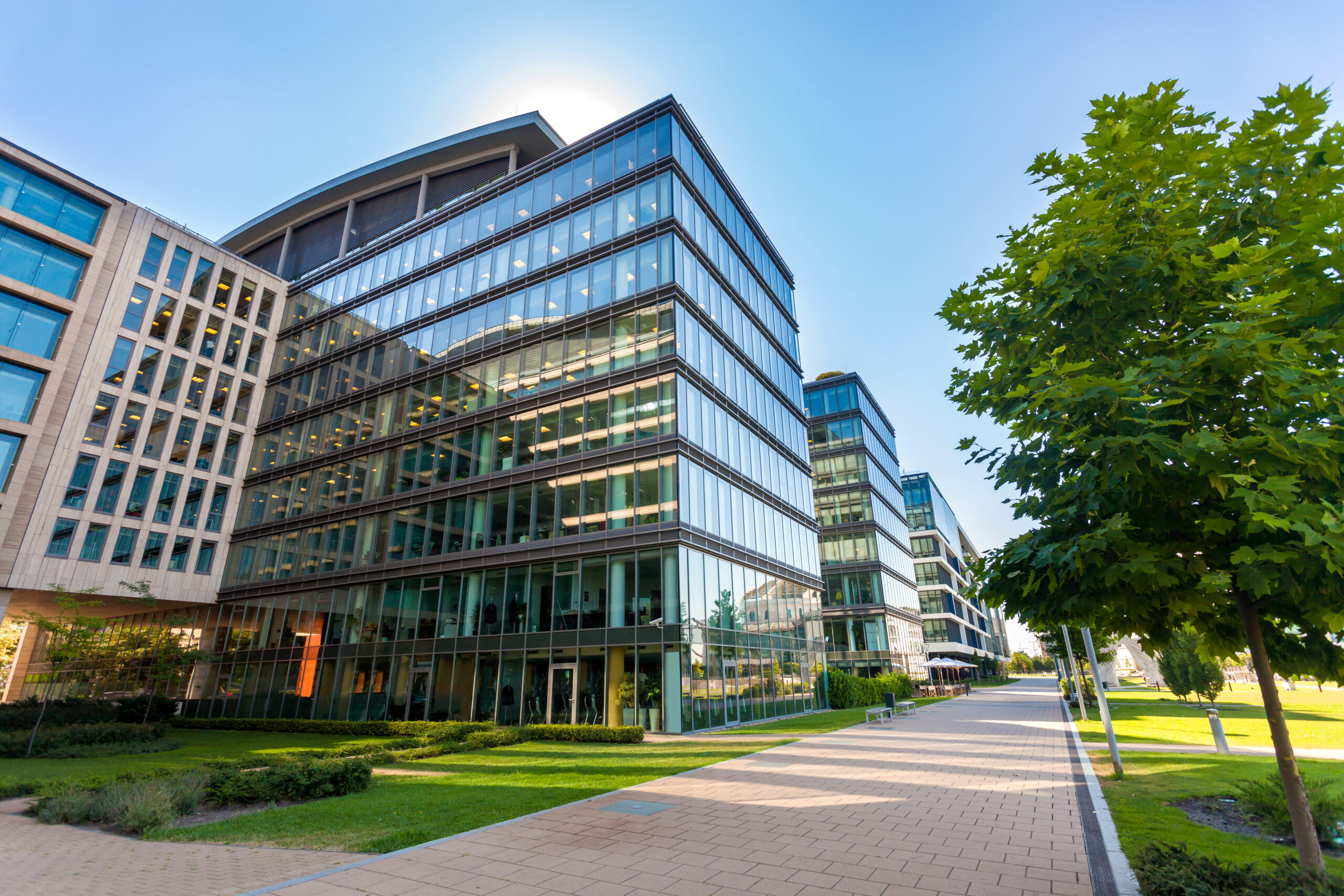Accessing reliable, consistent energy from utilities is something we take for granted. However, utilities achieve this reliability by balancing energy grid supply to demand. Without this balance, we’d experience far more power outages.
In addition, renewable energy sources like solar and wind energy are often variable in their supply due to the changing availability of sunlight and wind. When renewable supplies run out or when sudden energy consumption peaks cause supply shortages, utilities need to fire up fossil fuel sources as a back-up to maintain the supply/demand balance. This obviously causes emissions to increase, which negatively affects the sustainability performance of businesses purchasing energy.
As suppliers, utilities have the ultimate responsibility to maintain grid balance, but businesses can support them by participating in “demand response.” This allows them to leverage their own flexible energy consumption. By reducing building or portfolio-wide energy consumption during peak demand periods, companies help utilities maintain proper supply/demand balance. By participating in demand response programs, companies can earn financial incentives and help maintain a cleaner grid.
Definition of demand response
The International Energy Agency (IEA) defines demand response as follows:
“Demand response refers to balancing the demand on power grids by encouraging customers to shift electricity demand to times when electricity is more plentiful or other demand is lower, typically through prices or monetary incentives. Along with smart grids and energy storage, demand response is an important source of flexibility for managing the impact of variable renewables and growing electricity demand on the stability and reliability of electricity grids.”
Drivers of demand response growth
Utilities will need demand-side support for balancing the electric grid for multiple reasons. First, in the U.S., growth in renewables has led to more variable electricity supplies feeding grids. Renewable power (including wind, solar, hydro, biomass and geothermal sources) surpassed both nuclear and coal generation in the U.S. by 2022. The U.S. Energy Information Association (EIA) predicts an additional 75% growth in solar and 11% growth in wind power by 2025 from 2023 levels.
Next technologies such as vehicles, appliances, HVAC equipment and other equipment are increasingly designed to utilize clean, renewable energy sources through electrification. This affects the electric grid, which will experience higher electricity demand overall. Rising demand from artificial intelligence and data centers is another factor.
Finally, extreme weather patterns also create higher energy demand as more people turn on their air conditioning and heating to stay comfortable during heat waves and cold spells. Demand response opportunities are likely to grow as utilities manage the impacts of these changes to electricity demand. However, savings opportunities will depend on the specific programs offered by local utilities.
Commercial buildings are ideally positioned for demand response
Commercial buildings have the highest potential to financially benefit from demand response opportunities, though buildings of any size can participate. Buildings which are considered “grid-interactive efficient buildings” (GEBs) can earn an estimated $8 billion to $18 billion annually by 2030 (2–6% of total U.S. electricity costs), according to the U.S. Department of Energy. Shifting demand to reduce the load on grids also contributes to lower carbon emissions. When combined with energy efficiency, demand response from GEBs can reduce 80 metric tons of carbon dioxide emissions per year by 2030 (6% of the total from the US power sector).
Real estate operators are increasingly eager to seize relevant savings and incentive opportunities. The biggest sources of energy consumption in buildings tends to come from HVAC systems and refrigeration, while additional flexible loads depend on the energy consuming resources on site. Adjusting temperature controls a few degrees is a standard approach to demand response. On the other hand, energy flexibility for demand response doesn’t just imply reducing energy consumption. Timing is important. Shifting energy loads to on-site renewable energy resources during peak times or scheduling usage of certain equipment during off-peak times are also relevant approaches.

How demand response programs work
Properties of any size can participate in utility-led demand response programs. These programs offer participants financial incentives to lower energy consumption at key times. Utilities may offer pricing variability based on peak use times without a stated program, or they may have explicit demand response programs offering financial incentives.
The forms these financial incentives take vary by utility. Here are a few examples:
- Offsets to energy costs
- Fee reductions
- Peak demand premium rate avoidance
- Capacity payments for committing to energy load reductions during demand peaks
- Direct payments for real-time energy reductions during demand peaks
- Market participation through buying and selling electricity to earn profits
- Other payments for ancillary grid-optimizing services
Companies may choose to work with third-party companies who help them monetize their flexibility and automation. One example is Leap, which estimates building owners can achieve savings $0.10/sqft to $1.00/sqft per year.
Flexibility requires automation and control
To participate in demand response programs, energy flexibility is key for commercial building and facilities operators. Smart building technologies enable automation across building systems to plan and implement energy- and cost-reducing demand response strategy.
Smart meters, IoT controls and building management systems (BMS) like Atrius Energy, enable the necessary flexibility for demand response. With automation capabilities, companies can make real-time adjustments or schedule strategies to optimize their energy to reduce demand at relevant times. A building management system enables a full inventory of energy consumption on site and manages it from a centralized control platform. Systems as diverse as lighting, security, escalators and elevators, appliances, refrigeration, HVAC and on-site severs can be timed and operated in a way that leverages demand response financial incentives.
Demand response supports existing energy efficiency goals
Including demand response into an existing energy management strategy is a great way to reduce costs and add an additional source of revenue. However, it should not come at the expense of energy efficiency. Optimizing for efficiency and demand response go hand in hand to achieve optimal sustainability and cost improvements. Many utilities have long-standing incentives for energy efficiency improvements that can be paired with demand response.
Demand response is another opportunity highlighting how effective strategic planning can be used to meet sustainability and energy goals simultaneously. To leverage demand response programs and pricing models from utilities, building operators need tools to collect energy data and analytics to understand how much flexible energy consumption is available on-site. Atrius provides a full suite of technologies for smart building automation, energy management and sustainability data collection to unlock demand response opportunities.



